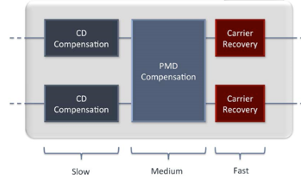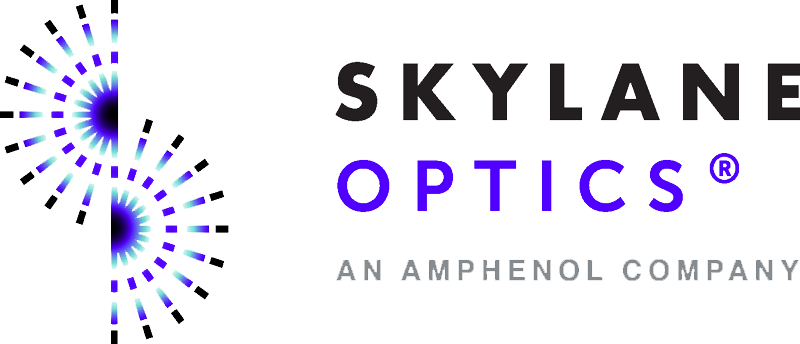What is coherent optics ?

What is coherent optics ?
Today, global bandwidth requirements are increasing by 25-50% each year and current facilities operating at 10G or 40G are not sufficient to meet this huge demand and rapid scalability requirement.
Currently, the most common way to send data with light is accomplished by simple amplitude modulation (on-off keying OOK). This means that the light is turned on and off to send data. But this simple way of doing things has reached its limits because we can’t turn the light on and off fast enough to increase the data transmission rate. So the industry has been looking for more sophisticated ways to modulate light. Many other proven modulation techniques already exist in the RF transmission world. The industry is therefore applying and adapting some of these techniques to modulate light. Coherent optics brings these techniques together by using the various properties of light to send more data. These key properties of light are its amplitude, phase and polarization.
- Amplitude modulation: Instead of using the simple OOK modulation (black and white), we can use different intermediate levels of amplitude (gray levels). It is like a dimmer for a light bulb. We speak of ASK: Amplitude shift keying. The amplitude of a carrier is shifted between two states to represent the zeros and ones.

Amplitude modulation - Phase modulation: Keeping in mind that light behaves like a wave, each wave (like a water wave on a lake) has a leading edge, a peak and a leading edge. To explain the phase, let’s imagine a constant wind blowing on a lake, this means that the water waves will follow each other, and their peak will arrive at constant intervals. With our eyes closed and an accurate clock, we can even anticipate the arrival of each peak. If, for some reason, the water peak does not arrive at the expected time, something has happened. The phase has been modified; the phase has been modulated by an event. This event is an element of information in itself. Going back to light, imagine that we can detect its phase, then any well-controlled phase modulation of light can be used to send and detect data. This is phase modulation. It is called PSK: Phase shift keying. The phase of a carrier varies between two states to represent zeros and ones.

- Polarization: With the carrier wave of light, there is an additional degree of freedom, which is the polarization of the light; there are two main directions of polarization: Vertical and Horizontal; both are used independently to encode the message. These two directions can also be used to carry separate messages. This is called polarization modulation. With coherent optics, we use the vertical and horizontal polarization of light to transmit data.

Coherent technology uses the three degrees of freedom (amplitude, phase and polarization of light) to focus more data on the wave that is being transmitted. In this way, we can achieve much higher bit rates on a single wavelength with coherent modulation. To achieve this goal, we need a coherent optical engine (coherent transmitter and receiver) supported by a sophisticated piece of electronics to do the job. This is the role of the DSP (Digital Signal Processor). This DSP has various functionalities such as chromatic dispersion compensation (CD), polarization mode dispersion compensation (PMD), non-linearities compensation, symbol clock recovery, carrier phase recovery, frequency offset compensation, symbol detection, polarization demultiplexing…

All of these features will allow greater flexibility in line rates, with scalability from 100G to 400G and beyond per single signal carrier.
What about terms like QPSK or QAM?
QPSK stands for Quadrature Phase Shift Keying. In the field of fiber optics, it is to shift the phase of the light wave according to four different possibilities while maintaining the fixed amplitude. QPSK is synonymous with 4QAM where QAM means quadrature amplitude modulation and where we do not play with the amplitude of the signal. The technology allows you to add more and more phase and amplitude levels to reach 8QAM, 16QM, 32QAM and even 64QAM. The more levels you add, the higher the bit rates you can achieve. For example, 64QAM contains 6 bits per symbol. This means that a bit rate of 100 GBaud/s would correspond to the transmission of a 600 Gbit/s signal with OOK, which is technically impossible.
In summary, coherent optical technology has the following advantages:
- Programmability: This technology can be adapted to a wide variety of networks and applications, and the same card can support multiple modulation formats and/or different transmission speeds, allowing operators to choose from a variety of line rates.
- High-gain soft-decision forward error correction (FEC): Allows signals to travel longer distances while requiring fewer regeneration points. It provides greater margin, allowing higher bit rate signals to travel greater distances. The result is simpler photonic lines, less equipment, lower costs and a significant increase in bandwidth.
- Spectral shaping: Provides greater capacity through cascaded reconfigurable optical add-drop multiplexers (ROADMs), resulting in increased spectral efficiency for superchannels. Spectral shaping is critical in flexible array systems because it allows carriers to be brought closer together to maximize capacity.
- Strong dispersion mitigation: Provides better optical performance at higher bit rates. Coherent processors must account for dispersion effects after the signal is transmitted over the fiber, including compensating for CD and PMD. Advanced coherent optics digital signal processors eliminate the headache of dispersion map planning and PMD budgeting by mitigating these effects. In addition, coherent processors improve tolerances for polarization-dependent loss (PDL) and must quickly track polarization state (SOP) to avoid bit errors due to cycle slippage that would otherwise affect optical performance. As a result, operators can deploy line rates of up to 400G per carrier over longer distances than ever before; high-speed signals can even be deployed over older fibers that previously could not support 10G.
Source: Ciena, What is Coherent Optics



